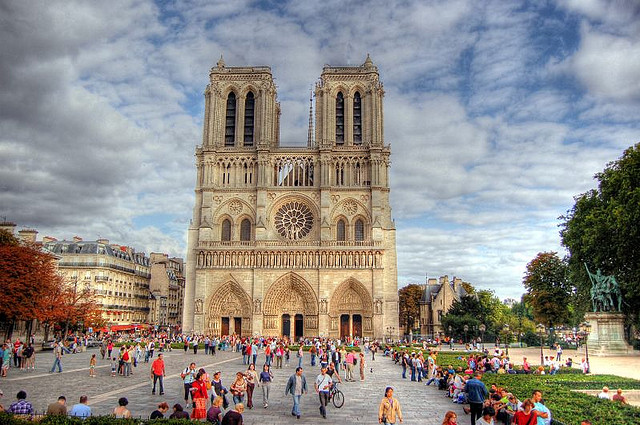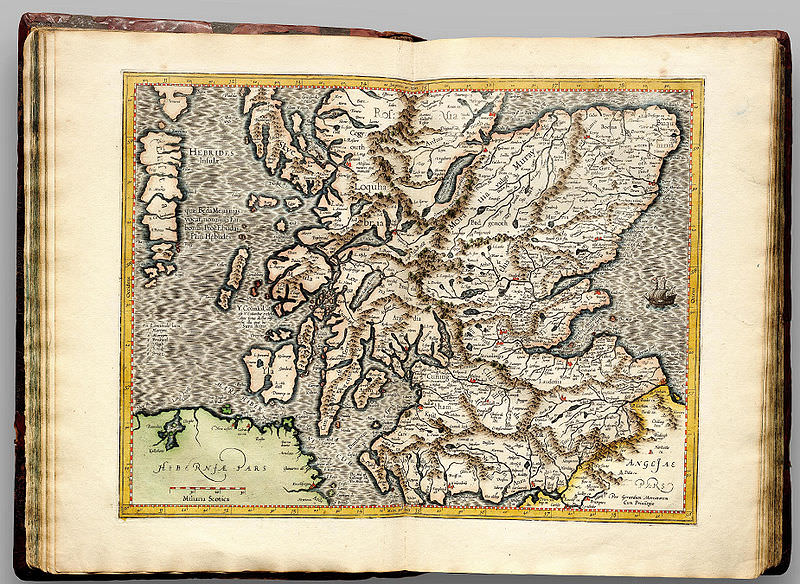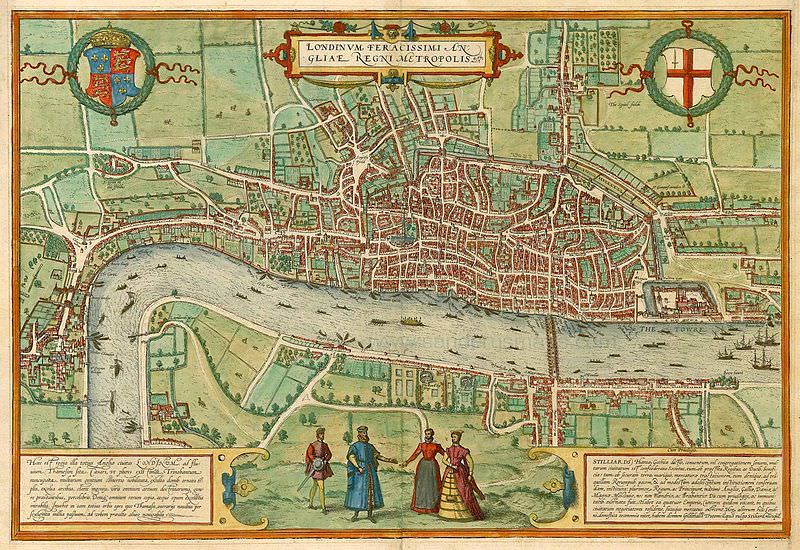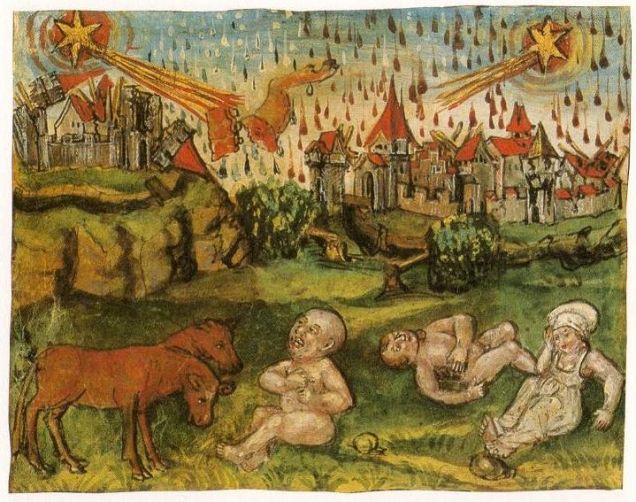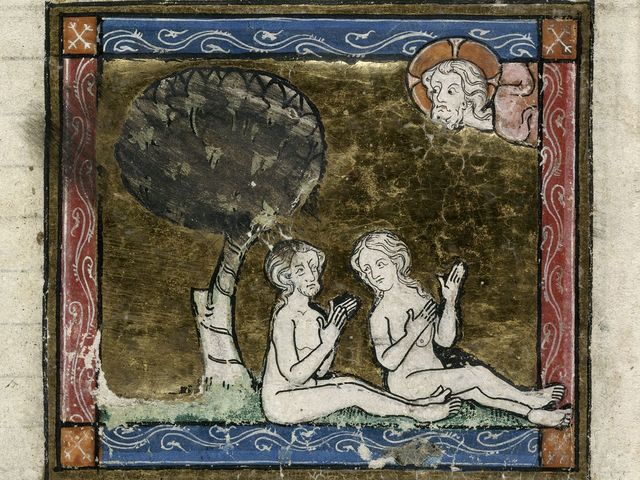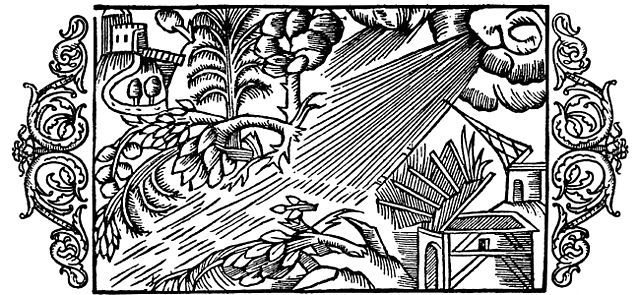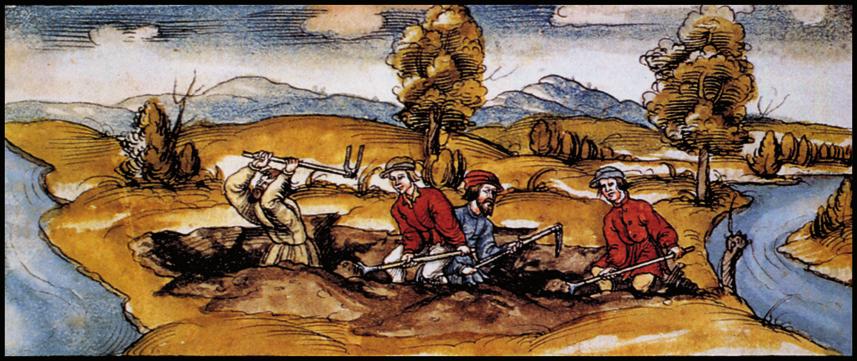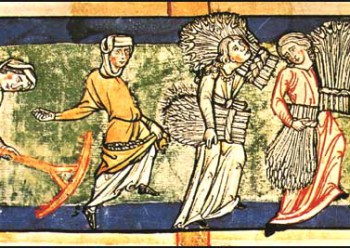Tornadoes in Mediaeval Britain
Mediaeval chronicles describe 21 tornadoes in Britain prior to the year 1500. Although the meanings of some of the accounts appear unclear at first sight, the features reported can nearly always be explained by reference to modern tornado cases.
Climate Change and Medieval Sacred Architecture
This study attempts to provide illustrations of how climate may have influenced architectural features during the Middle Ages.
‘The Worst Disaster Suffered by the People of Scotland in Recorded History’: Climate Change, Dearth and Pathogens in the Long Fourteenth Century
It is not the aim of this essay to provide an environmental history of medieval Scotland or even just of the fourteenth century in Scotland; that is a much larger task than can be addressed here. Rather, the intention is to explore the nature of the evidence that is available within the documentary record and place it alongside the various forms of proxy data for climate history to produce a synthetic narrative.
Of Wilderness, Forest, and Garden: An Eco-Theory of Genre in Middle English Literature
I posit that the components of the environment play a role in the deployment of the narrative by shaping the characters and influencing the action.
The Power of Poo: Waste and the Medieval Environment
This study will compare the ways in which three vastly different European cities and their civic institutions, London England – the Chartered Capital of a Kingdom, Siena Italy – an Oligarchic Republic, and Gdansk Poland – the reluctant territory of a Theocratic state
A Medieval Weather Report
What was England’s weather like in the year 1269?
Arthur Pendragon, Eco-Warrior
This essay explores the environmental agendas and ambitions that motivate John Timothy Rothwell, ‘a mad biker chieftain wielding an axe,’ who, claiming to be a ‘post-Thatcher’ King Arthur,
Medievalist helps scientists rewrite climate records
In a paper published in the world-leading scientific journal, Nature, Dr Conor Kostick’s research into medieval evidence for climate events has allowed scientists to pinpoint the exact relationship between historical volcanic activity and severe winters.
Explaining Extreme Weather in the Middle Ages
What was causing extreme weather in the Middle Ages? A medieval historian is starting to examine how chroniclers and writers from this period were turning to the night sky to better understand and perhaps prevent natural disasters.
Avalanches in the Middle Ages
One of the dangers a medieval traveller might face when crossing through mountainous terrain is the threat of avalanches.
Trees in the Middle Ages
What did medieval people think of trees? Here are a few observations about the role trees played in the spiritual and cultural life of the Middle Ages.
Ore, Fire, Hammer, Sickle: Iron Production in Viking Age and Early Medieval Iceland
Iron production may be used as a window through which to view, in part, the economic structure of Icelandic society during the Viking Age (c. AD 870-1000) and Early Medieval (AD 1000-1264) periods.
Lightning Strikes in Medieval Florence
Luca Landucci writes about lightning strikes in 15th century Florence.
Environmental Crusading: The Teutonic Knight’s Impact After the Baltic Crusades
Environmental archaeologist and Professor of Archeology at Reading, Dr. Aleks Pluskowski, examined Malbork and several other sites across Eastern and Northern Europe in his recent paper, The Ecology of Crusading: The Environmental Impact of Holy War, Colonisation, and Religious Conversion in the Medieval Baltic. Pluskowski is keenly interested in the impact the Teutonic Knights and Christian colonisation had on the region. His ambitious 4 year project on the ecological changes in this area recently came to a close at the end of 2014.
Local and Traditional on the Millennial Scale: Sustainable Waterfowl Management from Viking Age Iceland
Inhabited by Vikings since approximately 600 AD, the islands hosts an abundant, but terribly fragile resource, puffins, flightless birds that nest on rocky exposed cliffs, in easy range of the islanders other prime food source, pigs.
Tropical fire ants traveled the world on 16th century ships
Thanks to a bit of genetic sleuthing, researchers now know the invasion history of the tropical fire ant, the first ant species known to travel the globe by sea.
The Great Wind of 1362
Some of the most vivid accounts we have from the Middle Ages are those that detail calamities and natural disasters. Such was the case when a massive winter storm struck northwestern Europe on January 15, 1362. In England this event would be called ‘The Great Wind’.
Vikings’ homes would have been very polluted, researchers find
Danish researchers have found that the fires used for cooking and heat in Viking-era houses would have caused significant indoor air pollution.
Winter, snow and cold in the life of the Westviking
The main purpose of this paper is to examine how the Westviking were influenced by winter, snow and cold in their day-to-day life as they were making progress in the West.
Adversus paganos: Disaster, Dragons, and Episcopal Authority in Gregory of Tours
In 589, a great flood of the Tiber river sent a torrent of water rushing through the city of Rome
European Weather Extremes in the Lifetime of Charlemagne (c.742–814 CE)
An army of people, digging for a whole season, yet their efforts end in muddy ruin. Was it a project that was doomed from the start?
Connecting Roman and Medieval Climate and Historical Change: Five Challenges for the 21st Century
Michael McCormick discusses use of latest tools of climate science, human genetics and computer science to better understand the history of Medieval Europe and Rome,
The Contours, Frequency and Causation of Subsistence Crises in Carolingian Europe (750-950)
The Contours, Frequency and Causation of Subsistence Crises in Carolingian Europe (750-950) Timothy P. Newfield Crisis Alimentarias en la Edad Media: Modelos, Explicaciones…
Daily Weather Observations in Sixteenth-Century Europe
Thirty-two weather diaries written in astronomical calendars in central Europe in the late fifteenth and sixteenth centuries are presented and discussed.
Public Toilets in the Middle Ages
Where should you go to find a public toilet in the medieval city?

